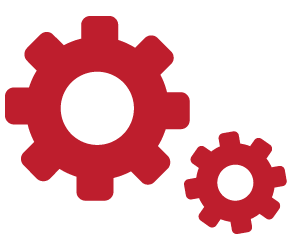Turning Words Into Bridges
Language translation is important because it enables effective communication and understanding between people who speak, read or want to learn different languages. It breaks down language barriers, facilitates global connections, and promotes cultural exchange. Translation enhances accessibility to information, supports business expansion, aids in legal and administrative processes, preserves cultural heritage, and drives advancements in technology. Overall translation plays a crucial role in fostering a more inclusive, interconnected, and understanding world. It also plays a vital role in connecting people, bridging cultures, and breaking down language barriers.
HOW ITS DONE
Analysis And Transformation
The analysis and transformation phase of language translation is a pivotal stage in the translation process. During this phase, the source text undergoes meticulous analysis to comprehend its structure, meaning, and context. Linguistic elements such as grammar, syntax, and vocabulary are scrutinized to ensure a comprehensive understanding. Preprocessing steps like text normalization, tokenization, and sentence segmentation may be applied to facilitate analysis. Linguistic and semantic analysis help unravel the intended message and interpret the text accurately, considering idiomatic expressions, cultural nuances, and metaphors. Terminology management ensures consistency in translating key terms. Moreover, understanding the broader context, including the target audience and domain knowledge, aids in producing translations aligned with the original meaning. Once analyzed, appropriate transformations are applied, selecting equivalent words, phrases, and grammatical structures that convey the intended message in the target language.
Retrieve
The retrieve phase is crucial in language translation as it enables translators to access a wide range of resources and references, ensuring accuracy, consistency, and a comprehensive understanding of the subject matter. By utilizing linguistic tools, parallel texts, domain-specific references, and collaboration with experts, translators enhance the quality of the translation and deliver a final product that is faithful to the original text while meeting the requirements and expectations of the target audience.
Translators may access dictionaries, glossaries, and specialized terminology databases to find appropriate translations for specific words or phrases.
Reuse
The reuse phase in language translation involves leveraging existing translations and linguistic assets to improve efficiency and maintain consistency. By reusing existing translations and linguistic assets, translators can significantly improve efficiency, reduce turnaround time, andmaintain consistency. It allows for the accumulation of linguistic knowledge and the development of a comprehensive translation database, resulting in higher quality translations and increased productivity. Moreover, the reuse phase promotes collaboration among translators, enabling them to benefit from each other’s expertise and contributions.
Revised Translation
This phase in language translation is a critical stage that focuses on reviewing and refining the translated text to ensure its accuracy, fluency, and adherence to the intended meaning. During this phase, professional translators or revisers carefully examine the translated content and make necessary adjustments to enhance its quality. In the revised translation phase, the reviser compares the translation with the source text to verify its faithfulness to the original meaning. They evaluate the linguistic accuracy, grammar, syntax, and vocabulary usage, making corrections and improvements where needed. The reviser also pays attention to the overall coherence and flow of the translated text, ensuring that it reads naturally and fluently in the target language.
Learned Translation
The learned translation phase in language translation refers to the process of continuously improving and refining translations based on feedback, experience, and lessons learned from previous projects. It involves incorporating knowledge gained from past translation endeavors to enhance future translations. In the learned translation phase, translators analyze and evaluate their own work, as well as feedback received from clients, reviewers, or colleagues. They reflect on the strengths and weaknesses of their translations, identifying areas for improvement and learning from any mistakes or challenges encountered.
THE PROCESS

REQUIREMENTS ELICITATION
- Client Consultation
- Document Analysis
- Clarification of Ambiguities
- Identification of Project Constraints
- Gathering Reference Materials
- Cultural and Localization Requirements

DEVELOPMENT AND TESTING
- Front-end and back-end development
- Weekly Client Feedback (SCRUM)
- Testing and Quality Assurance
- Deployment

SUPPORT AND MAINTENANCE
- Content Updates
- Linguistic Revisions
- Quality Assurance
- Cultural Adaptation
- Technology Updates
- Client Feedback and Supporta
LET’S COLLABORATE
